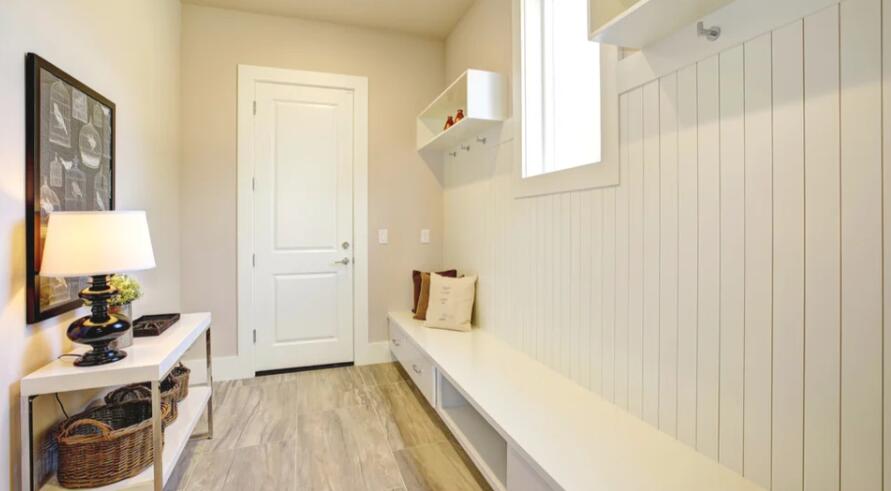The entryway and mudroom are often high-traffic areas that can quickly become cluttered and disorganized. These spaces serve as the first impression of your home, and a tidy entryway and mudroom can make a significant difference in maintaining an organized household. In this article, we will provide you with practical tips and strategies to help you create a clean and functional entryway and mudroom.
1. Assessing the Space
Before diving into organizing your entryway and mudroom, it’s essential to assess the available space and understand any limitations. Start by measuring the dimensions of the area to determine what furniture or storage solutions will fit best. Consider any unique architectural features, such as alcoves or niches, that can be utilized for storage. Take note of electrical outlets or heating vents that may affect the layout of the space.
2. Decluttering
To create a clean and open space, decluttering is key. Start by sorting through the items in your entryway and mudroom and remove anything that is not essential or doesn’t belong there. Create three piles: keep, donate/sell, and throw away. Let go of items that you no longer use or need. This step will help you create a blank canvas to work with when organizing the space.
3. Establishing Zones
One of the secrets to an organized entryway and mudroom is to establish specific zones for different purposes. Start by identifying the needs of your household and assign areas for storing shoes, coats, bags, keys, and other frequently used items. This will help you create a designated spot for everything, making it easier for family members to find and put away their belongings.
4. Storage Solutions
Investing in practical storage solutions is essential for maintaining an organized entryway and mudroom. Consider incorporating shoe racks, hooks, shelves, and baskets to keep items off the floor and well-organized. Shoe racks or benches with hidden storage compartments can keep footwear out of sight. Hooks and shelves can be used for hanging coats, hats, scarves, and bags, while baskets can corral smaller items like gloves, umbrellas, and mail.
5. Utilizing Wall Space
When it comes to organizing an entryway and mudroom, maximizing vertical storage is crucial. Use wall space efficiently by installing hooks or pegboards. Hooks are perfect for hanging coats, hats, and accessories, while pegboards offer customizable storage for items like keys, small baskets, or even a calendar. By utilizing the walls, you can free up floor space and keep frequently used items within easy reach.
6. Labeling and Categorizing
To maintain a tidy entryway and mudroom, it’s important to have a system for labeling and categorizing items. By organizing belongings into designated containers or using labels, you can easily locate and put away items. Consider using clear bins or baskets to store items like scarves, gloves, or pet supplies. Labeling shelves or hooks can also help family members find their personal belongings quickly.
7. Creating a Drop Zone
Designating a specific area as a “drop zone” can help keep your entryway and mudroom clutter-free. This is a designated spot where family members can place their keys, wallets, sunglasses, and other daily essentials upon entry. It can be a small table, a wall-mounted organizer, or even a decorative tray. By having a drop zone, you’ll prevent these items from being scattered around the house and easily misplacing them.
8. Incorporating Personal Touches
Organizing your entryway and mudroom doesn’t mean it has to be devoid of personality. Incorporating personal touches can make the space feel inviting and reflect your family’s style. Hang a piece of artwork or a family photo on the wall, or opt for decorative hooks and racks that match your aesthetic. Consider adding a small potted plant or fresh flowers to bring life and color to the space. Personal touches can transform a utilitarian area into a warm and welcoming entryway or mudroom.
9. Implementing Maintenance Routines
Establish regular cleaning and maintenance routines to keep the entryway and mudroom tidy. Set aside time each week to declutter, wipe surfaces, and organize items. Vacuum or sweep the floors, dust shelves, and inspect the storage solutions for any repairs or replacements needed. Consistency in maintenance will help prevent clutter from accumulating and ensure the space remains organized.
10. Regularly Reassessing and Adapting
Periodically reassess the organization system to ensure it meets changing needs. Make adjustments based on seasonal items or changes in family dynamics. For example, switch out winter coats and boots with summer accessories as the seasons change. Take note of any items that are consistently causing clutter and find better storage solutions for them. This ongoing evaluation and adaptation will help the entryway and mudroom function optimally and stay organized in the long run.
Conclusion
An organized entryway and mudroom create a clean and welcoming space. Assess the space, declutter, and establish specific zones for each item. Utilize storage solutions and maximize vertical space with hooks and shelves. Label and categorize items, and create a drop zone for essentials. Add personal touches to reflect your style. Implement maintenance routines and regularly reassess and adapt the organization system. These strategies will transform your entryway and mudroom into an efficient and enjoyable space, setting the tone for the rest of your home.

